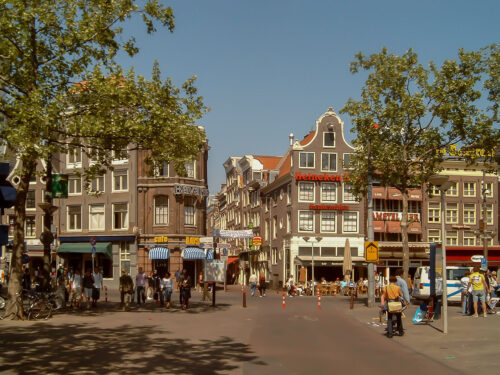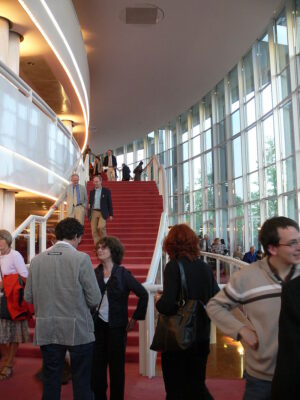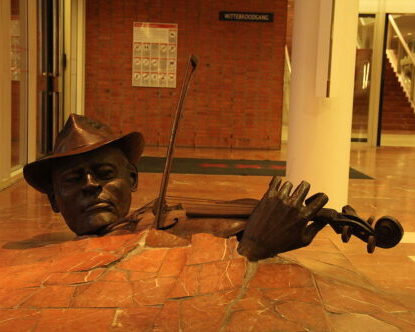Waterlooplein and Stopera
Before we reach Waterlooplein and Stopera we will pass through the beautiful beautiful Rembrandt Square that lies on the northwestern side of Willet-Holthuysen. The square is dedicated to the famous Dutch master of art who lived very close to the site. The highlight of the square aside from the statue of the painter that stands in the center of it is another ensemble of statues that lie on the feet of the Rembrandt statue and were added just a few years ago. The statues are a representation of one of the most famous of Rembrandt’s paintings “The Night Watch” which is also one of the most famous Dutch Golden Age paintings and is now located in the Rijksmuseum.



On the east side of Willet-Holthuysen lies Blauwbrug Bridge, the bridge that was built in the early 1880s in Parisian style to replace an older blue (Blau) bridge of the early 1600s. Across the Amstel, on the east side of the bridge, lies a unique quite possibly on a worldwide level complex. The complex of the Stopera. This complex houses the Dutch National Opera & Ballet and the Amsterdam City Hall under one roof (hence the name of the building that comes from the word Stadhuis (meaning city hall)- and the word Opera.
After the city hall moved from its place in Dam Square where it sat for nearly 200 years (Royal Palace today) it changed several locations until finally in 1955, the city council commissioned the firm of architects Berghoef and Vegter to draft a design for a city hall on the Waterlooplein.
At the same time, the plans for the site of the opera house also made a tour around the city but the project was always postponed. Both projects had reached an impasse at the end of the 1970s until in 1979 the architect Holzbauer proposed that the city hall and opera house could be combined into one complex. Despite the initial objections, the project was realized and Stopera was finally completed in 1986. Two years later, Amsterdam’s new city hall opened its doors to the public.
The quaint complex deviates from the general homogeneity of the historic center with its massive glass and white marble facade so its overall success with the public of the capital has not been achieved. The functionality however of the National Opera and Ballet and the amazing views of Amstel River from the building’s interior compensate the visitors and the foyer’s aficionados.




